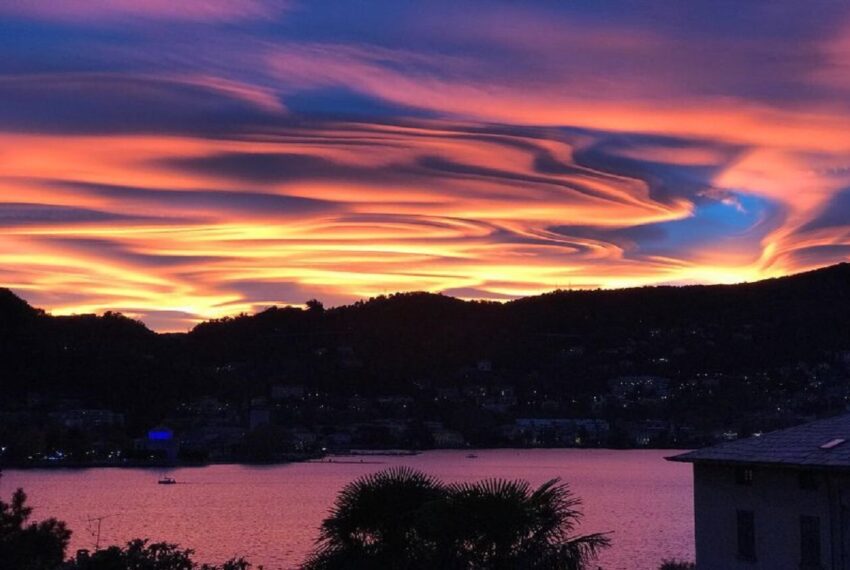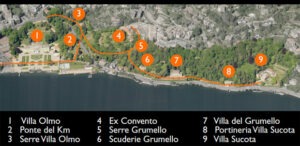
A journey into the emotions of Lake Como …
The fascination exercised by Como and its lake is as old as the history of our civilization, it comes to us through the descriptions left by its famous visitors, poets, noblemen, philosophers, rich merchants, ecclesiastics, which make us understand what were the reasons that induced , and still lead many tourists to take a tour on Lake Como and let themselves be enchanted by his poetry.
Certain emotions are capable of profoundly affecting one’s own life, as if by magic: this is the spell of what Virgil had defined in the Georgics the “maximum“, “the greatest”: “Te, Lari maxime …” (I will remember you, or maximum Lario …).
This stretch of water, placed at the edge of two very different but complementary areas: the fertile plains to the south and the rugged mountains to the north, has always been the ideal place to stay and rest of artists and poets who have enjoyed its beauty reassuring and restorative, of emotions.
This since ancient times: from the poet Cecilio to the two Plinii, from Giuliano called the “Apostate” to Ambrogio.
Cassiodorus, minister of Theodoric, defines the lake as a place blessed by nature and furnishes, with the name of Como, a singular etymological interpretation: “It is right that they call it Como because it is adorned (compta, from comère,”ornare“) of many gifts that make its delightful. The lake is contained in a large valley of great depth … Its banks are fringed with white foam and …. as a crown, they have beautiful peaks of very high mountains around them. The coastline is bordered by meadows that surround … the perpetual green of olive groves “[1].
Unrepeatable sensations, emotions that speak to the soul and fill it up: how not to agree with Stendhal, who had found here an authentic “locus amoenus”, the space of his delight? It is in Como that you have to go “pour jouir de la musique” … this sublime lake, located in a “peut-etre unique au monde au monde”.[2]
Or what William Dean Howells writer, the “official” founder of American realism in his book “Italian Journeys – from Venice to Naples and behind” [3] writes:
“My visit to Lake Como has become for me a dream of a summer – a vision that remains faded throughout the year until the hot July flames bring out the nice colors in which it was vividly painted … the city of Como is located, in a swarm of lights, behind us, the hills and the shadows become darker, the lake is a silvery quivering surface …. ”
What emotions!
The main reasons for making a tour along Lake Como or Lario are to be found right here: in the charm of its lake, in the enchantment of the landscape, in natural beauty, in particular geological conformation, in the millennial practices of man carried on the banks degrading towards the lake, in those places, they have wisely realized, over the millennia, winding paths and roads, dry stone walls, terraces, villages, castles and stone churches, splendid villas with docks, magnificent gardens, rural agglomerations, monasteries, churches, ports … incomparable views of the banks, the antiquity of historical memories, the sweetness of the climate, the comfort of the living room, the variety of excursions, which are irresistible attractions.
It happens in Como that, in the already attractive landscapes of the lake, man has set the further merits of art, architecture, nature recreated in the gardens.
In the era of the Grand Tour, when numerous lovers of the beauties of Italy descended from the cold North, they found, in Lake Como, in its particular synthesis of sublime nature and ancient culture, the most ideal entrance and stay in the “Bel Paese”(beautiful country). [ 4]
Tourism resources in the city of Como are varied, among which the most important remains the lake, its shores, lake and hill landscapes.
In addition to the natural landscapes, the urban planning of Como, the historically and culturally modeled landscape expressed through urbanity, is a great resource for tourism. Finally, there are many other elements (monuments, typical products, cultural and scenic events …) which together constitute the identity of the city which, combined with natural and urban landscapes, projects the uniqueness of Como.
The monuments of different eras have recently been included in a single large and complex tourist route, called the “Kilometer of knowledge”, which will be further expanded with the arrangement of Villa Olmo and its park by mid-2018.
It leads from the central Piazza Cavour to the western side, lapping the long lake, the monuments of the archistar Libeskind, the European Resistance, passing in front of the Volta Temple, the Rationalist War Memorial on design of Sant’Elia, rowing and sailing clubs, to the international hydrofoil of Como (unique in Italy), to the neoclassical villas “Gallia”, “Saporiti”, “Gallietta”,”Pallavicino”, “Pisa”, “Mondolfo Volontè”, up to the majestic “Villa Olmo” with its Italian garden. Here, periodic events are organized (such as the Bulgari week in 2015 and Dolce Gabbana event next summer) and cultural events with international art exhibitions. The route then proceeds towards the Villa del Grumello, an architectural and natural jewel in which Ugo Foscolo lived and wrote in his stay in Como.

[1] Guarracino Vincenzo, ” Lario d’arte e di poesia – gita al lago di Como in compagnia di artisti e scrittori (Lario of art and poetry – trip to Lake Como in the company of artists and writers)”, Edizioni (Editions) Guida 2010, pages 23-24
[2] Guarracino V, op. cited, pages 17-18.
[3] William Dean Howells, Italian Journeys – from Venice to Naples and behind, I.B.Tauris & Co. Ltd. (30. Juni 2011)
[4] For further information on the topic, the anthological collection in 5 volumes, edited by Miglio G.F., Pini G., ” Larius. La città e il lago di Como nelle descrizioni e nelle immagini dall’antichità classica all’età romantica (Larius. The city and the lake of Como in the descriptions and images from classical antiquity to the romantic age) “. See also in I volume, the essay by Miglio G.F. , ” Introduzione al mito del Lario (Introduction to the myth of the Lario)”.
For the extensive travel literature, see with particular attention to the villas and gardens cf. Balbiani A., ” Como, il suo lago, le sue valli e le sue ville descritte e illustrate (Como, its lake, its valleys and its villas described and illustrated)”. Considerations on this theme also ” Case-museo tra storia e progetto. Esempi sul lago di Como (Case-museum between history and project. Examples on Lake Como)”, by Selvafolta O., Ranzi A ..
